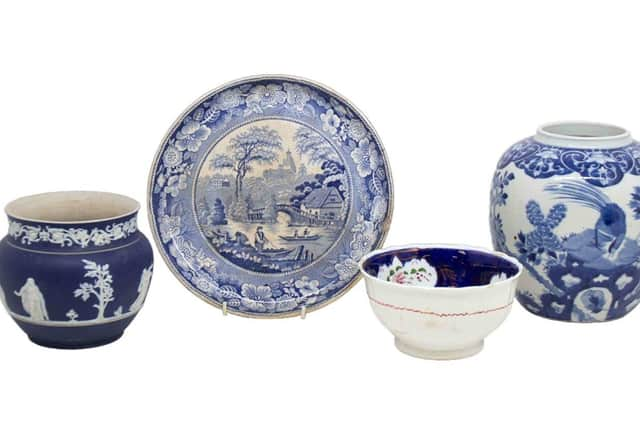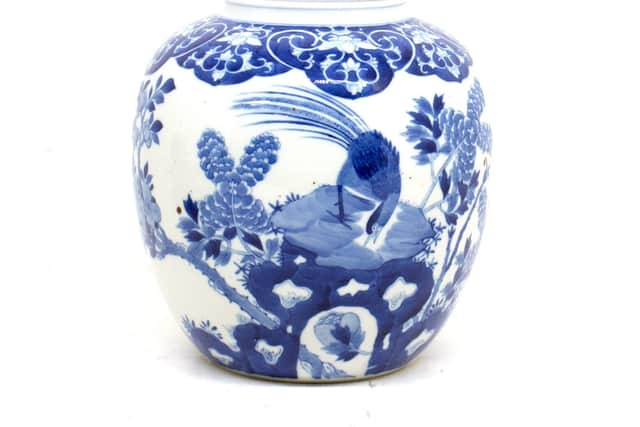Can you spot the treasure? Valuable find discovered in Oxfordshire farmhouse pottery display
and live on Freeview channel 276
The important object was hiding among a mixture of blue and white pottery displayed on a table. However, it caught the eye of antiques expert Paul Fox when he visited the property near Banbury to assess items with auction potential.
Paul, a valuer for Hanson Holloway’s Auctioneers in Banbury, said: “I noticed a ginger jar among a collection of Copeland and Staffordshire-made plates and bowls. I was taken by its striking shade of blue. It was an interesting piece so I asked for permission to take it away to carry out more research.”
Advertisement
Hide AdAdvertisement
Hide AdThe news was good. It was inspected by the firm’s Asian consultant Adam Schoon, a man whose knowledge is so vast he has appeared on TV’s Antiques Road Show. He determined that the 9in ginger jar was a centuries-old Chinese treasure made during the reign of Emperor Kangxi, the fourth emperor of the Qing Dynasty who ruled China from 1662 to 1722.


The late 17th century object, which is more than 300 years old, is painted in inky blue tones of cobalt blue and decorated with flowering plants growing from a weather rock together with a fanciful bird. Around its shoulders is a deep lappet collar filled with leafy scroll work.
Adam said: “The inky-blue design is very suggestive of the Kangxi period. It was a delight to examine it. It should do extremely well at auction. Collectors from the Far East are keen to repatriate items like this to their homeland.”
Paul said: “The piece is an example of China’s exemplary dedication to creating the finest ceramics. Under Emperor Kangxi China experienced cultural advancement and blue and white ceramics flourished. Imperial kilns were reopened to create high quality objects. Such was their popularity King William III of England housed a large collection at Hampton Court Palace.
Advertisement
Hide AdAdvertisement
Hide Ad“The blue was created by the distinctive cobalt oxide mixture which was imported from Persia to begin with. Cobalt ores were ground into a pigment and then painted directly onto the smooth porcelain body. In Chinese culture the colour blue has deep significance. It’s associated with growth and advancement and represents the element of wood. Kingfisher blue was highly attractive to the Chinese court and the Emperor himself.


“It’s a remarkable farmhouse find. Despite it lacking its lid, we expect the ginger jar to make between £1,000 and £1,500 and spark worldwide interest. That came as a real surprise to our seller. They thought it was just another piece of blue and white pottery.
“It’s so important to get items valued. Many people have objects tucked away at home, perhaps inherited, and they have no idea of their worth. Let us take a look. You just might be sitting on a windfall.”
Auction: The Chinese ginger jar will be offered in Hanson Holloway’s February 3 Banbury Fine Art and Antiques sale. Entries invited for monthly auctions in Oxfordshire. Call 01295 817777 or email [email protected]